HyperX Pulsefire FPS: a gift for the sniper and machine gunner
Hi GT! The diversity of computer peripherals has led to a stalemate. In gaming mice, there is nothing new and breakthrough for a long time - the sensitivity of the sensors already exceeds all reasonable limits, for MMO fans there are plenty of options with thousands of additional buttons, and there is nothing to say about customizable lights.
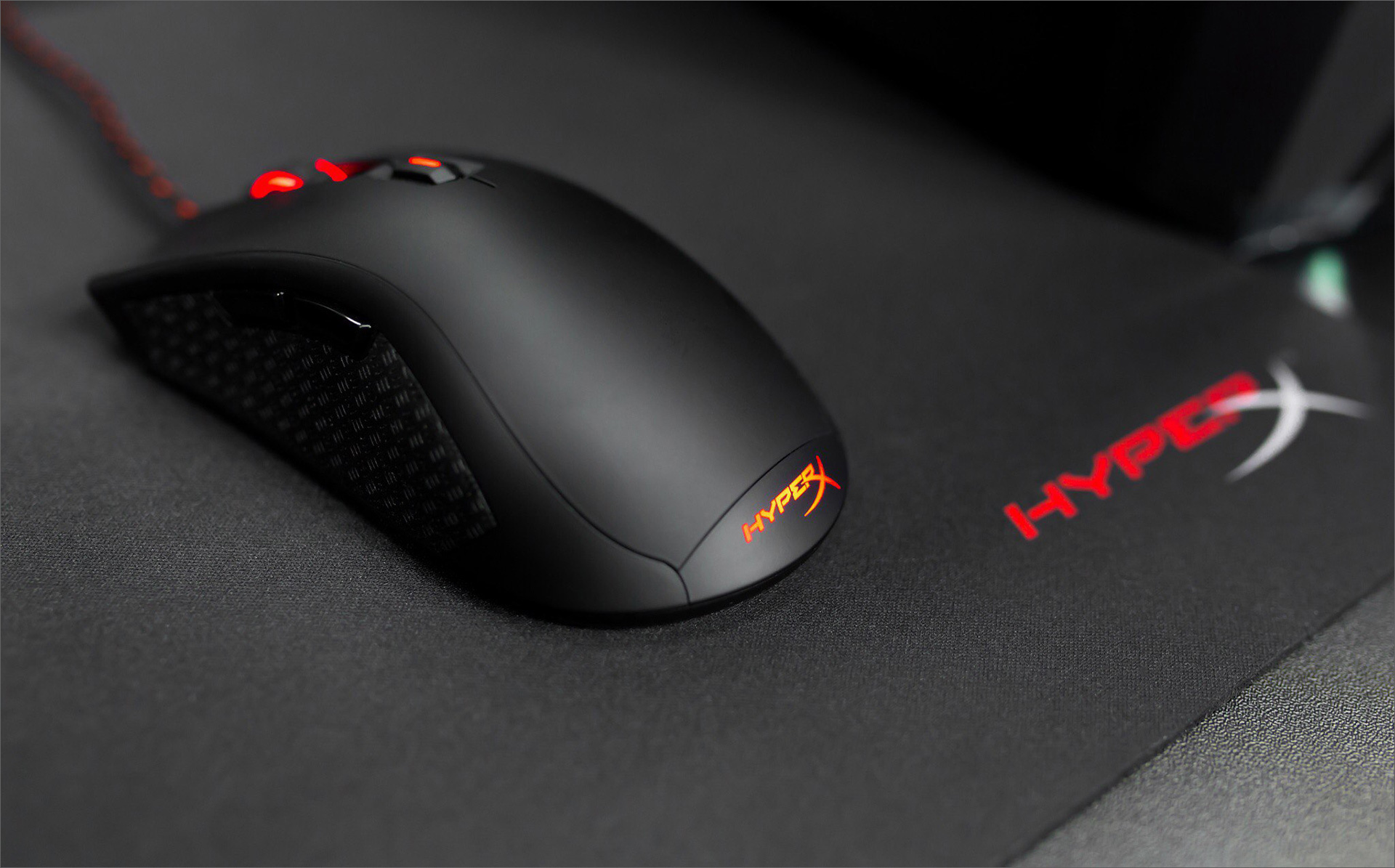
Dozens of vendors, popular and not so, produce faceless clones, flaunting decorations and zeros on the price tag. Find in this jumble of bright LEDs and extreme DPI something truly suitable is becoming more and more difficult, and so rare are those rare instances with a refined value for money and minimalistic design. HyperX Pulsefire FPS is just that, and now you can see for yourself.
The theater starts with a hanger, the work starts from the login screen, and any new gadget starts from the box. HyperX rodent is packed in a vertically-opening cardboard case.
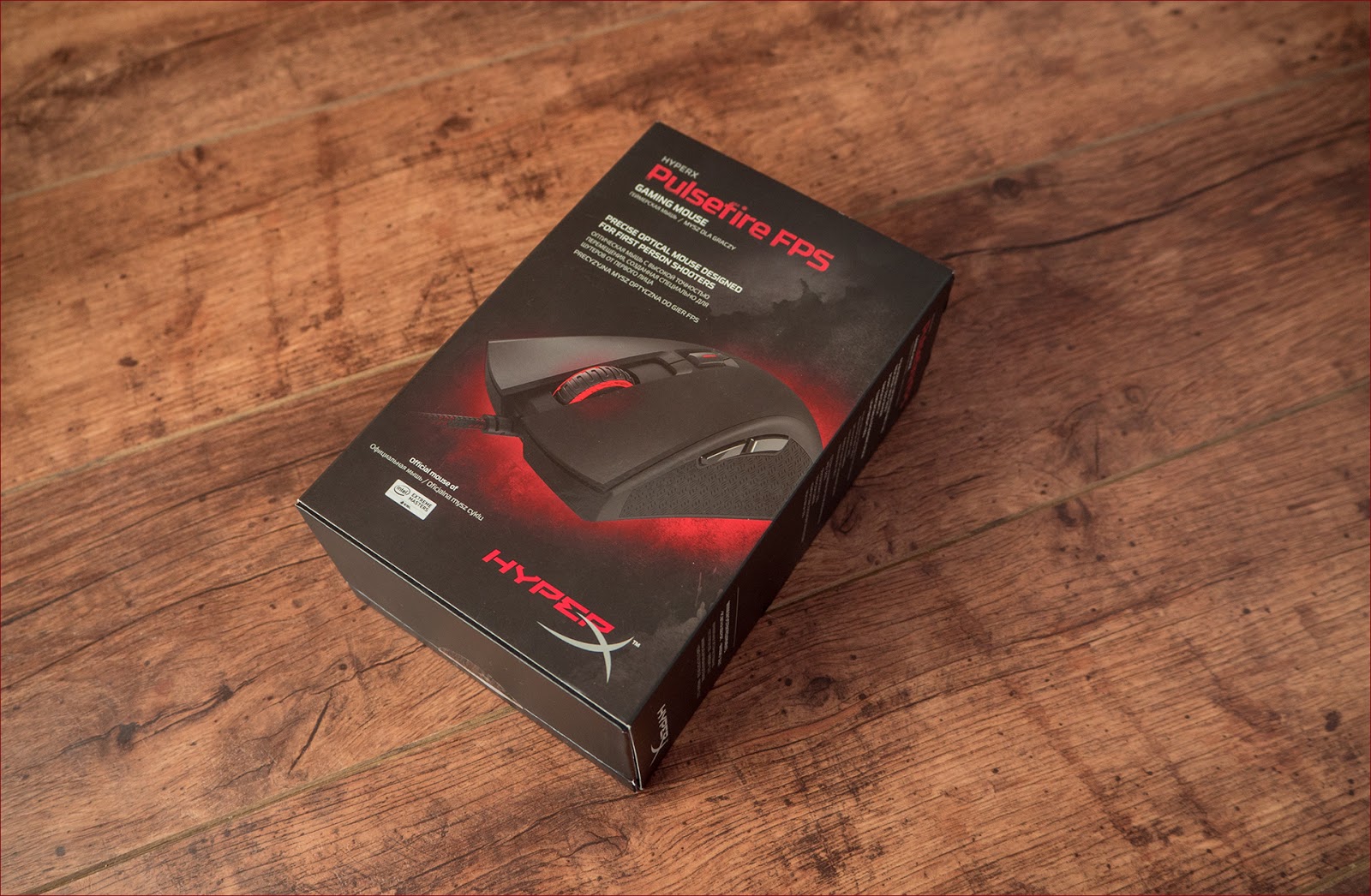
Almost apple minimalism reigns inside: a mouse on a plastic bed, and a fabric tail under it. No multi-layer translucent blisters, screeds and try-tear-me-a-non-half-packing of protective adhesive tape.
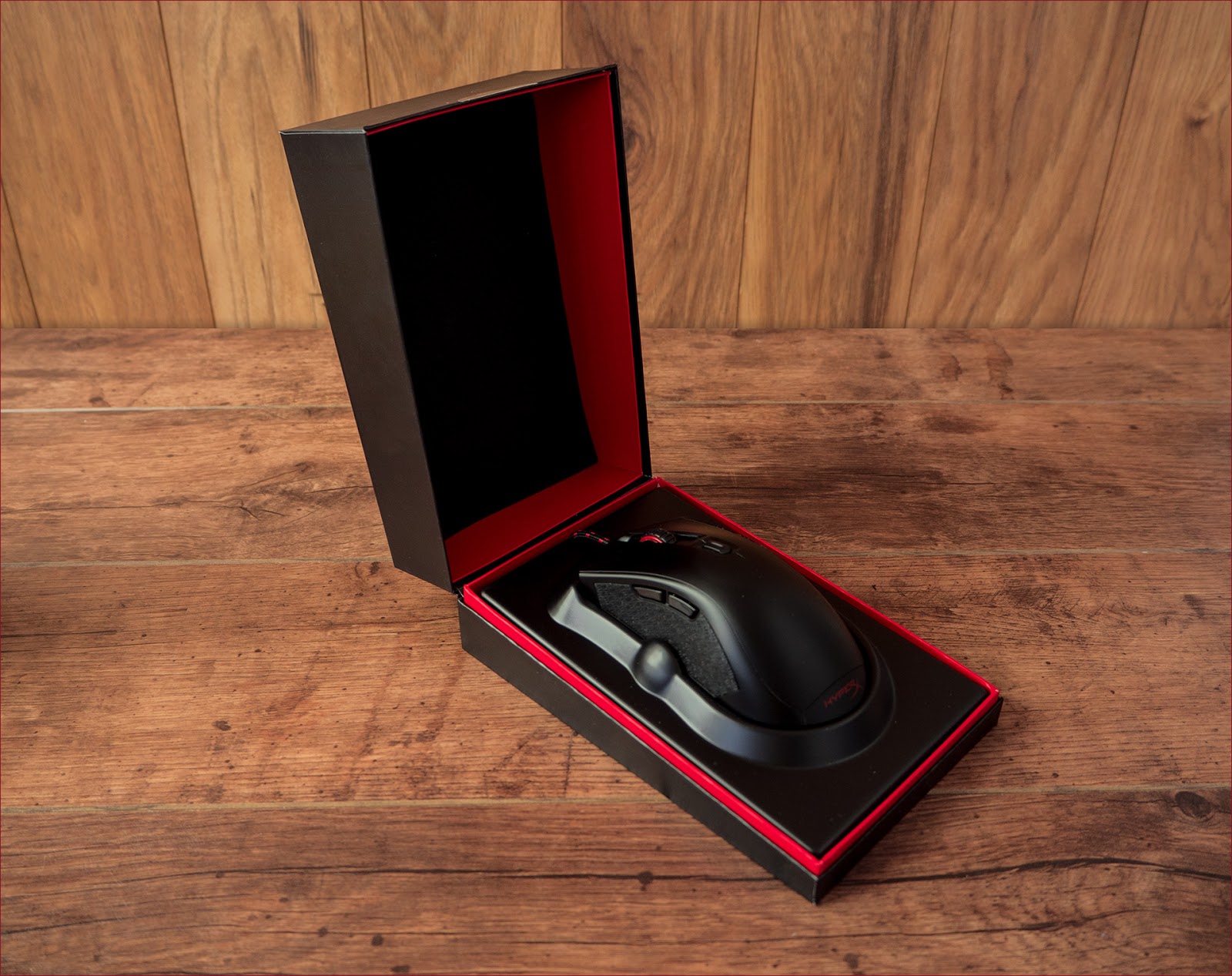
Not that the box was an important functional part, but attention to the details is already visible here: it's nice when you are taken care of and unpacked with another small pleasure.
At first glance, Pulsefire FPS is a typical mouse for players in shooters: there are dozens of them. Asymmetrical design for the right hand, ergonomic grip and average in all respects dimensions - you can drag the mouse with your fingers and the whole palm. Two buttons on the left side, an ordinary wheel, an additional mini-button below it to adjust the sensitivity on the fly - that's all. Competition in this segment has long been brought to the limit and has moved from a quality struggle to an ideological one: commitment to one or another brand sometimes outweighs common sense or technical characteristics.
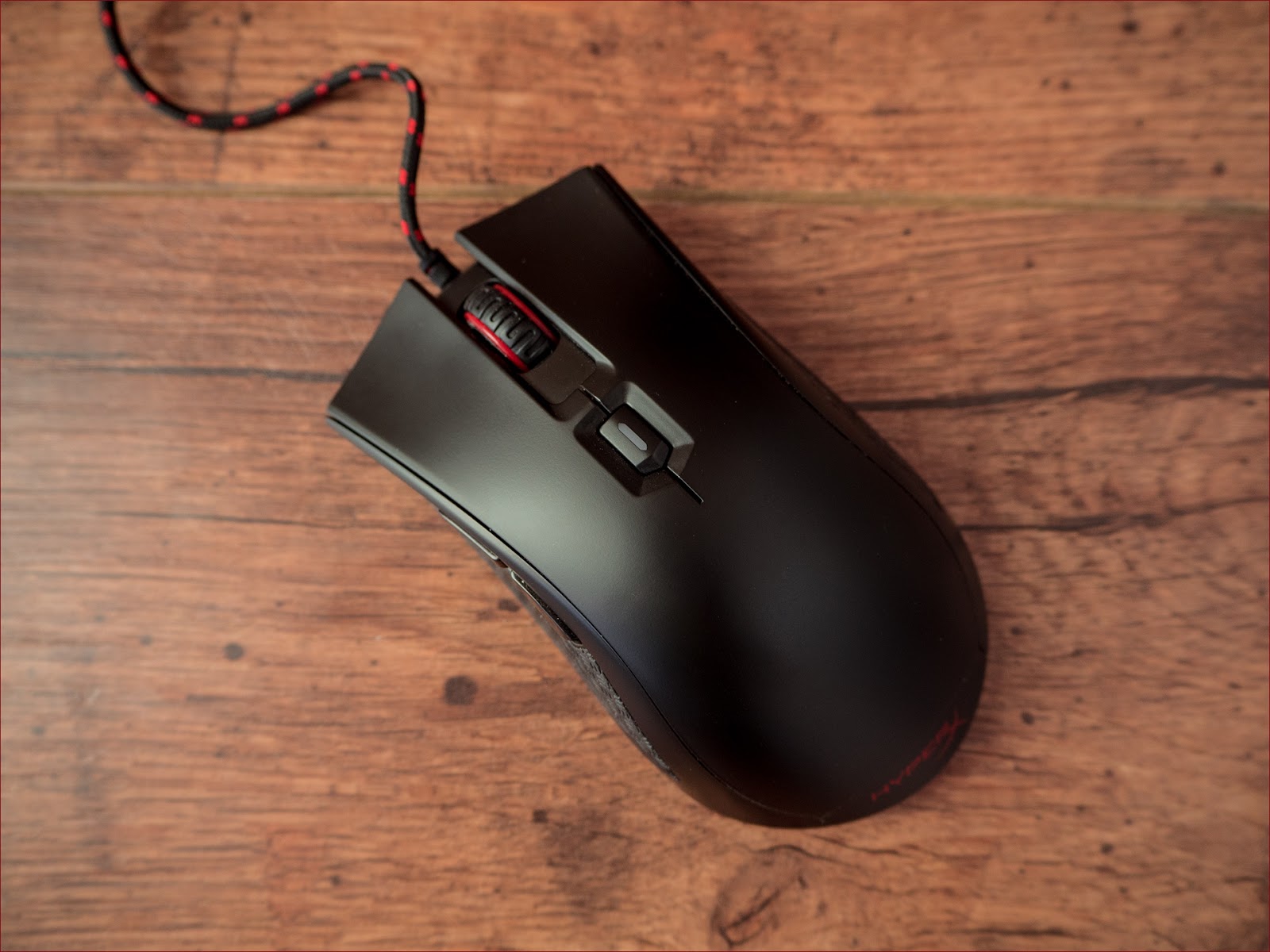
However, even five minutes of operation forced to pay attention to the rodent. Despite the “pot-bellied” profile, the mouse is not very tall and weighs quite a bit. Simple-looking dark gray plastic is very hard to stain, and completely indecent-oily prints are easily erased with a standard napkin. Rubberized side panels do not “float” on the layer of transparent glue, but stay in place, as if they were fused into the structure. Everything together creates a feeling of a monolithic carbon-fiber device: not the slightest squeaks, everything keeps in its place ideally, and moving elements move as if on rails.

Feelings of a “click” create two elements: Omron microswitches (which are probably in all decent mice), registering the press itself and determining the force required to directly perform a click, and the characteristics of the key's plastic: its flexibility, free movement before touching “ Clicker "and body thickness.
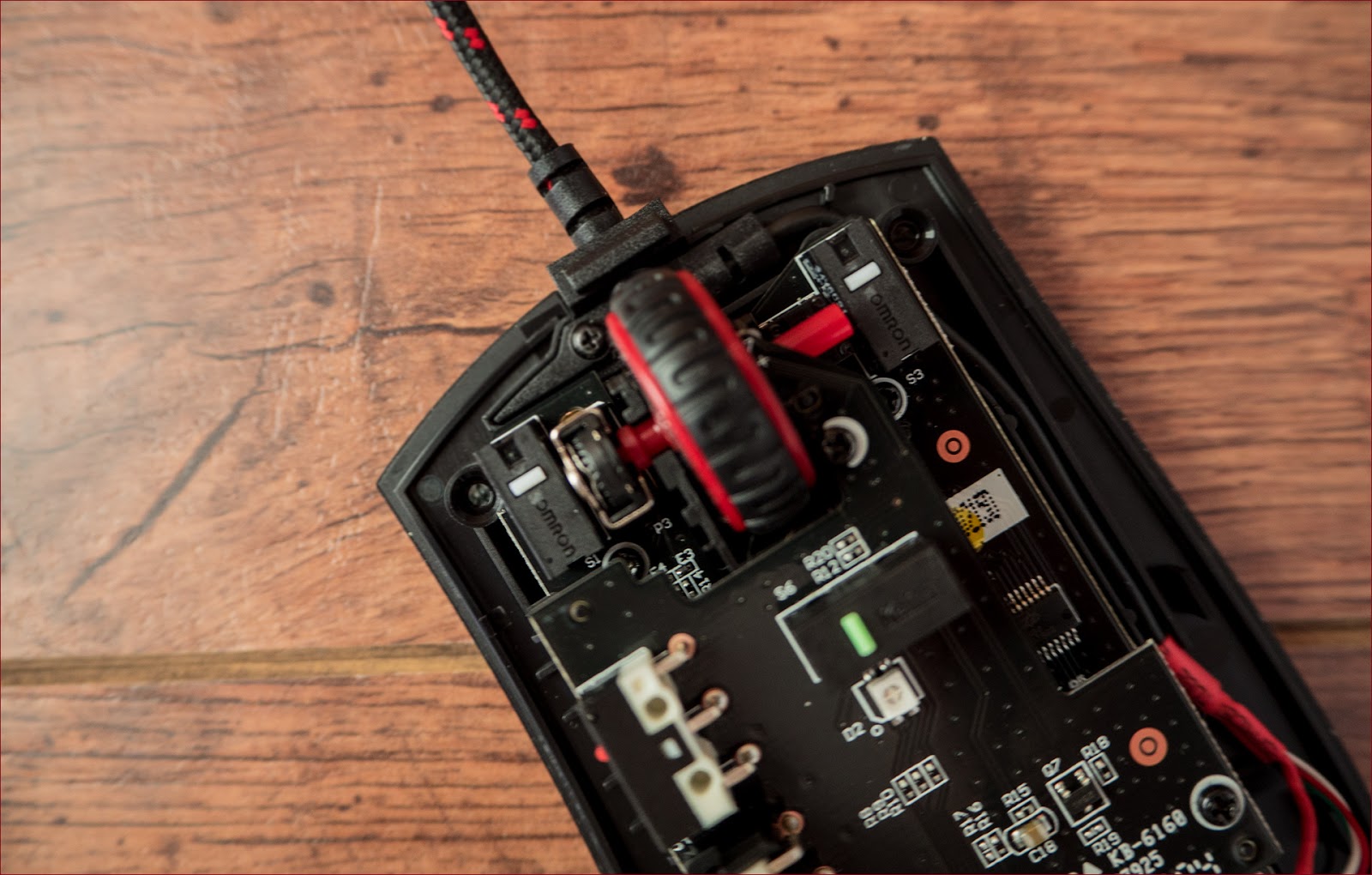
Both the left and right buttons work with the precision of surgical instruments. The effort is calibrated so well that you can keep the key on the verge of triggering and clearly feel the border after which a click will occur (and a shot, respectively).
Large side keys (performing basic navigation back and forth in Windows and office programs) have an excellent “threshold” when pressed. Even if your thumb is always on one of them - there will be no accidental pressing in 99.9% of cases, the line between “worked” and “just about” feels perfect.
The wheel is devoid of any fashionable features such as kinetic scrolling and switching modes: the usual “steps” when scrolling, well convey tactile information to the user, and do not lead to cursor jitter.

One of the main features of the Pulsefire FPS is the huge “paws”: these are not just four slips that tend to catch some dirt or dust on their edges, scratch, loosen the glue joint and get lost in a backpack. Two huge monolithic stickers with a wide patch of contact and smooth rounding around the edges: no hooks on the playing surface, no loss of efficiency. Only a completely ceramic base would be cooler, but the prices for such luxury are far from humane.
Overall, the typical HyperX. The cable in the original red-black textile braid is quite soft, but durable, good materials and a balanced approach to the filling.
The most delicious in the mouse, of course, inside. We heat up the lower part with a hairdryer, gently hook the sliding surface and slowly prepare the tailed beast. If inside who expects to see a miniature nuclear reactor, drawings of the "death star" or a diamond coating of moving parts - I hasten to disappoint you, there is nothing supernatural about Pulsefire FPS.
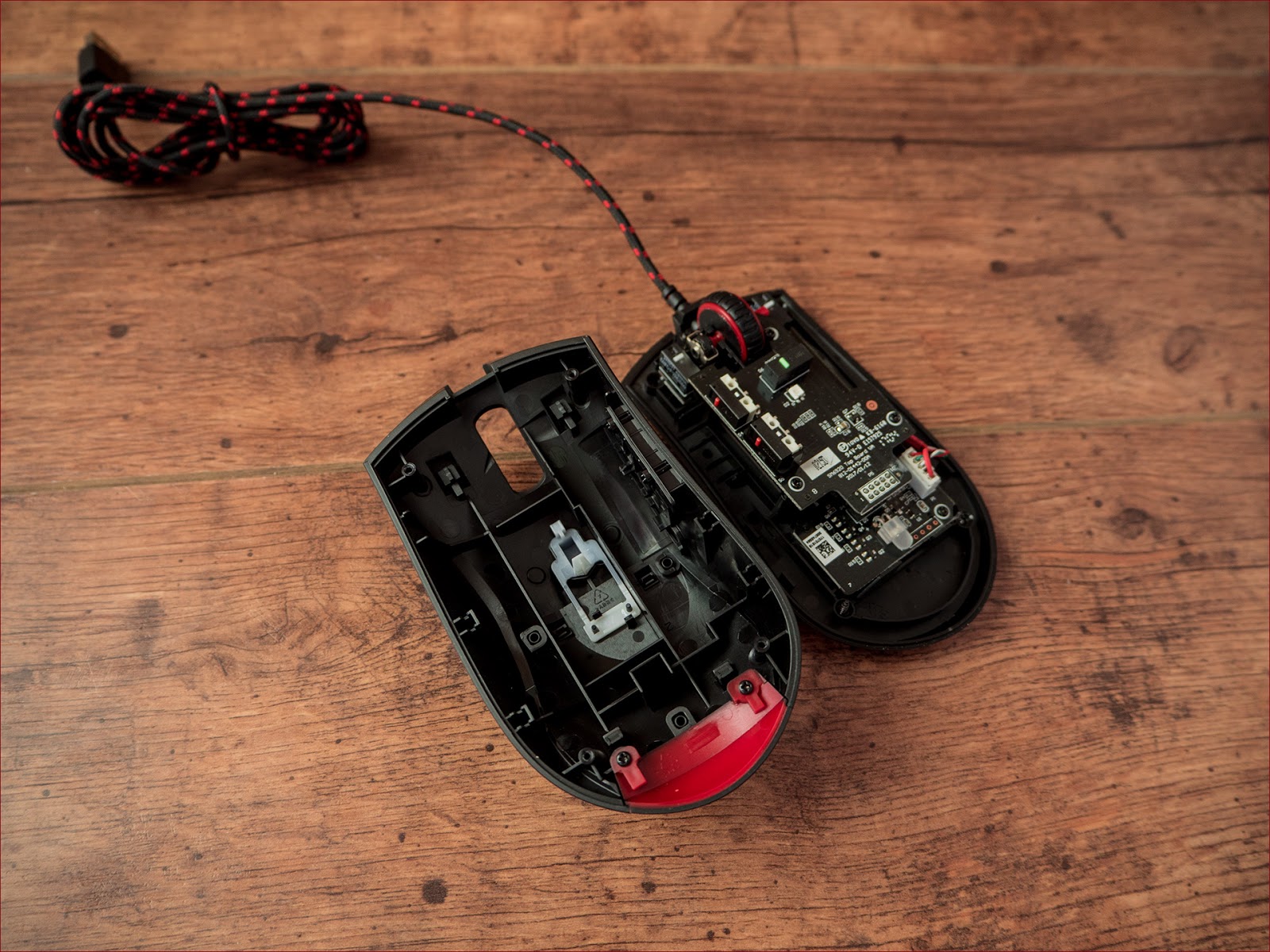
A wheel with a mechanical (resistive) encoder is considered less durable than the options with an optical sensor, but it has its advantages. This scheme works faster and does not suffer from the effects of "reverse scroll" if it stopped in an intermediate position and the system could not correctly determine the direction of scrolling during the first "step". And the resource of such a solution is still sufficient - you will have to rotate the wheel continuously (24/7) for many months in a row in order for the system to fail.

The registration of the main clicks is performed by Omron's proven Japanese “mikrikas” with medium elasticity: you will find these in most gaming mice, and the main thing here is the correct installation and contact with the response part of the keys. The transfer of tactile sensations to the user and the ability to keep the mouse on the verge of clicking directly depend on this. For the side buttons and the sensitivity switch parts are used simpler, manufactured by Kailh.
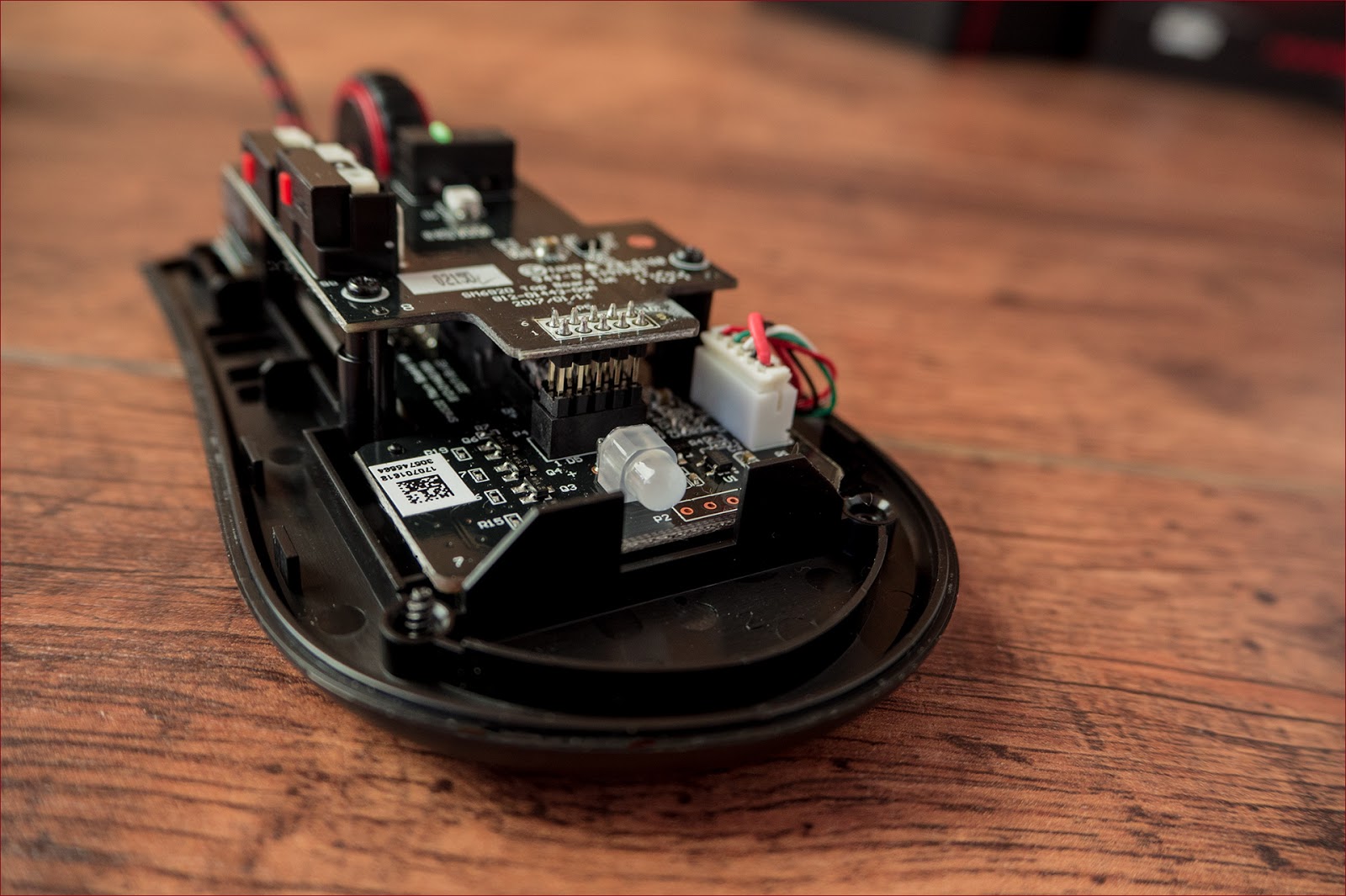
The sensor is a classic game of the game of the past years: Pixart PMW3310. The sensitivity range is from 400 to 3200 with two intermediate steps of 800 and 1600 DPI, low data processing delays and high surface scanning frequency made it popular among manufacturers, and the accuracy of work and the absence of distortion on both axes (X, Y) ensured a trip to the hall Fame Flawless sensors (featuring flawless accuracy) and recognition among professional players and amateurs around the world.
Despite the rather old sensor and a low maximum DPI, the mouse behaves perfectly both in the system and in games. A major role is played not only by the hardware itself, but also by the firmware of the microcontroller, which processes the flow of information from the mouse sensor. The transformation of raw data into understandable system - just the very half of the "magic", which distinguishes a good mouse from the excellent. In the case of HyperX Pulsefire FPS, the formula for success is simple: Well-studied hardware + experienced programmers = excellent tracking of the cursor.
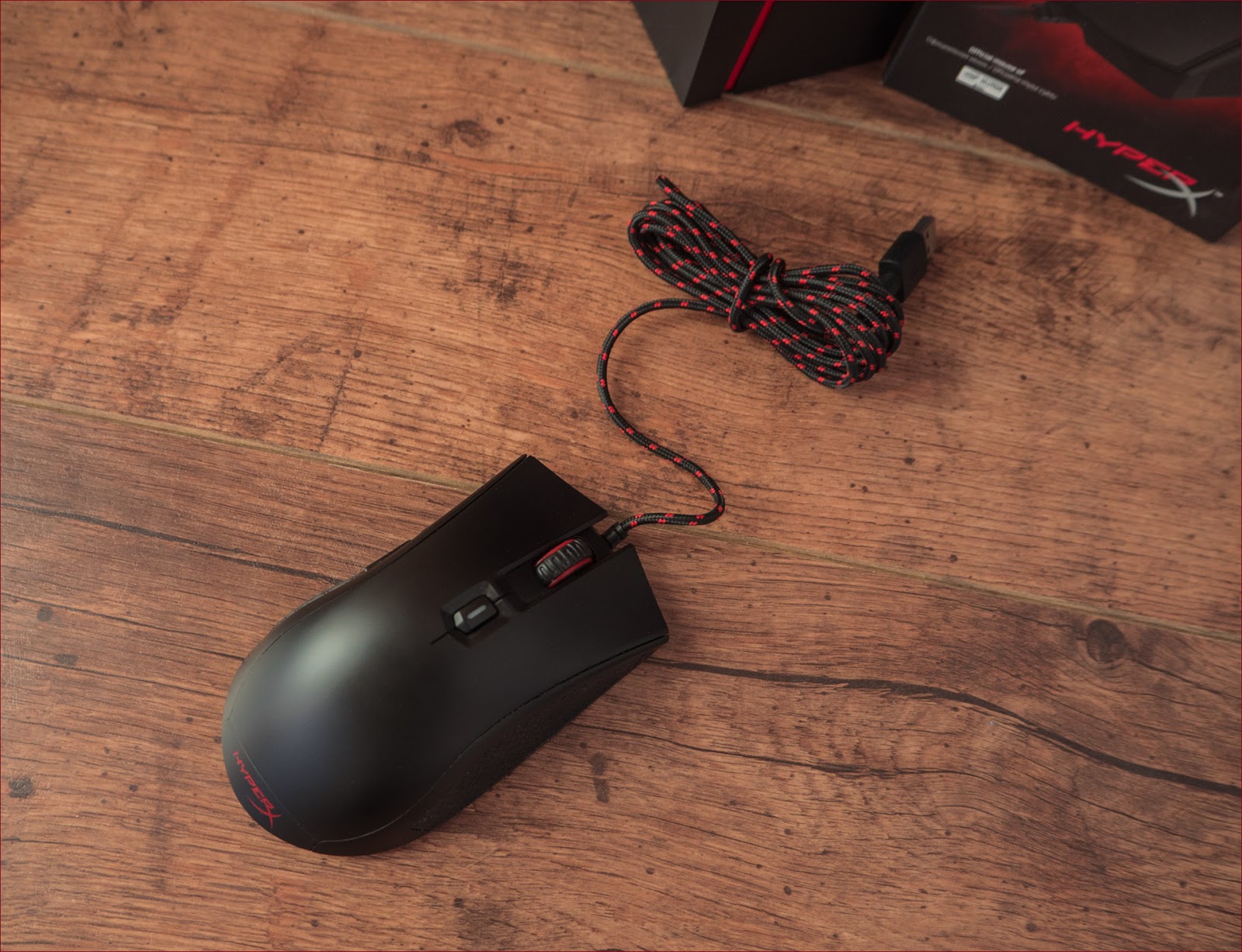
You can play on a bare wooden table for something relaxing, like GTA V, without any problems. The sight will not shake, stick and perform sudden jerks - too. The work of the mouse on a high-quality gaming carpet is truly revealed. Both HyperX branded gaming surfaces and other vendors' versions work perfectly: on thin plastic, textured aluminum and puffy fabric mats with a soft backing, Pulsefire FPS feels equally confident.
Licked software works wonders. If you have ever switched from a regular office monitor to a 120+ hertz game, and even with some G-sync, you will understand what it is about. Instant reactions to each movement and at the same time extremely predictable trajectory of the cursor.
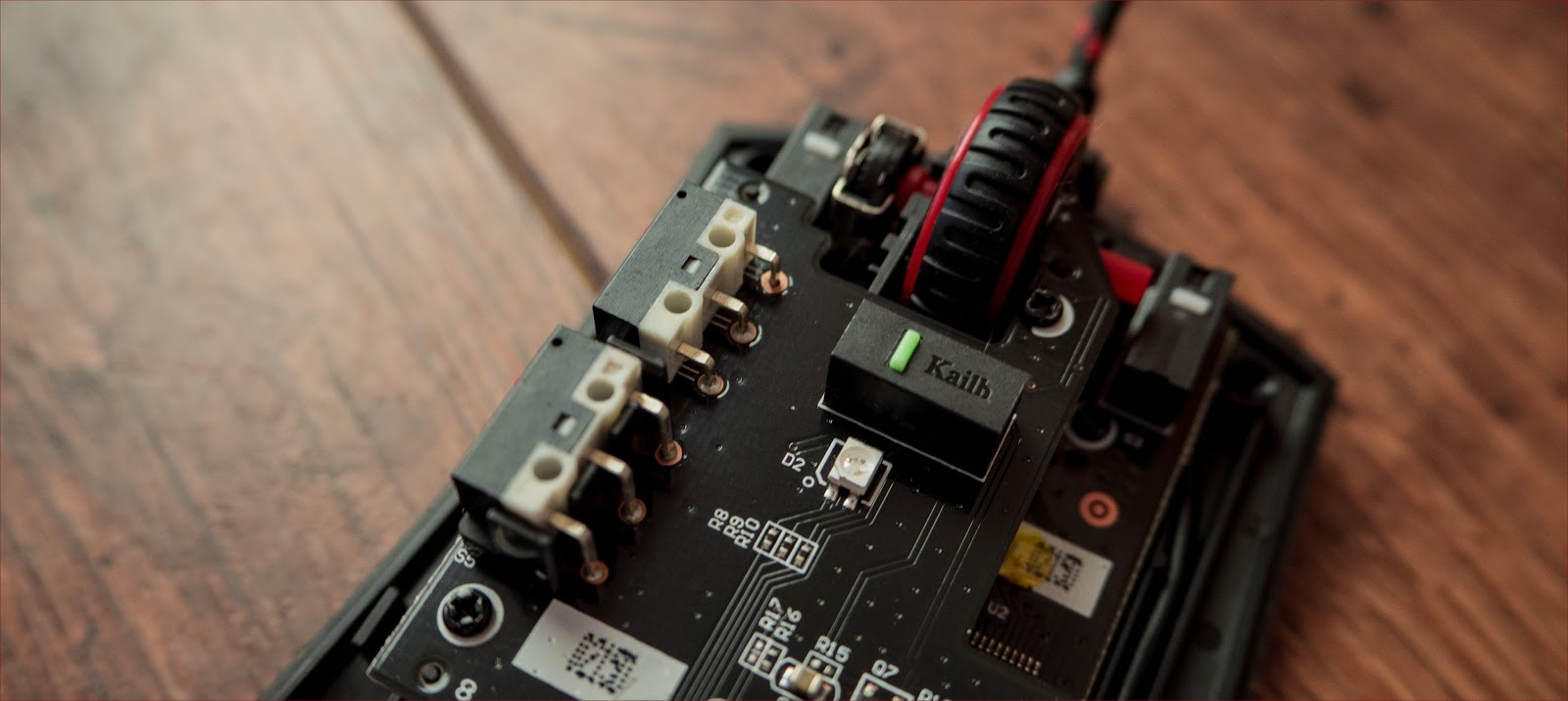
As if you are moving your finger across the touch screen or using a graphics tablet: the cursor follows your thought without the slightest hesitation, and there is no characteristic “cramp” inherent in laser mice. Optics somewhat smoothes the heterogeneity of movement and surface defects, while the engineers managed to get rid of the “water” in the sensations: there is no effect of “jelly” or “cursor on the elastic band”. As a result, each stroke of the cursor turns into an elegant and precise gesture. There was an opponent - became a frag.
In the Overwatch with a 160 Hz display, it is easy enough to lead the target with a sniper: only iron will not make you a champion, but will allow you to start playing without thinking about the periphery, on some "spinal" reflexes. To control the spray "Kalash" in the same CS: GO much easier than with a laser sensor.
The Pulsefire FPS does not have record-breaking characteristics or memorable features — the mouse and the mouse, albeit a very valuable breed. There are few devices on the market that, for all their simplicity, turn out to be of high quality, practical and convenient. The lack of what abroad is called “bells and whistles” somewhat diminishes the mouse values in the eyes of the players, khm-khm, the younger age group, but brought it the prestigious RedDot design Awards for its ergonomics and appearance.
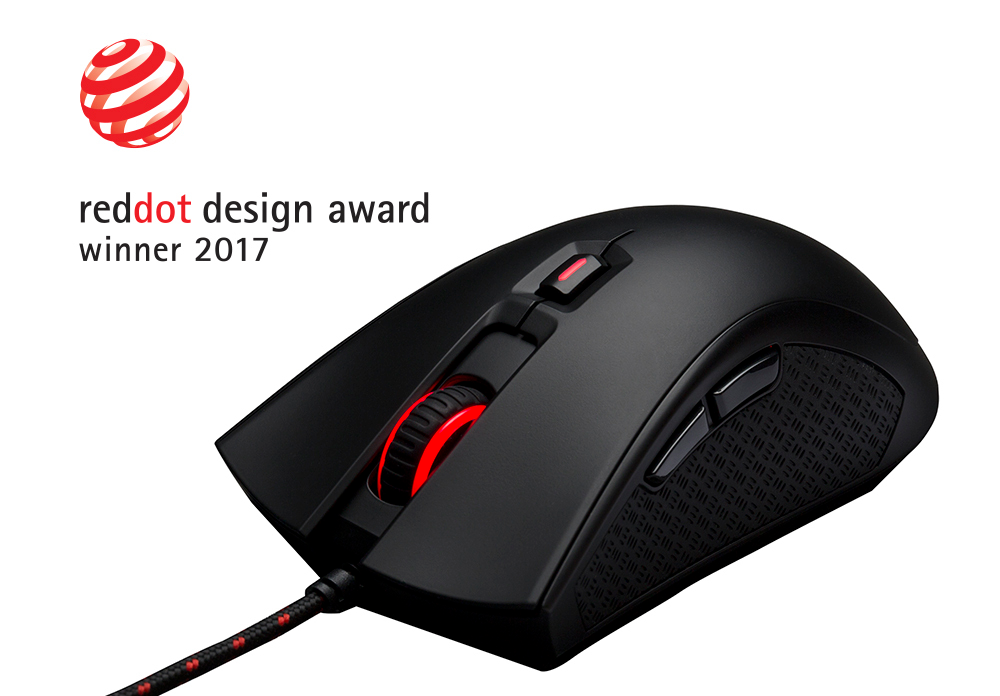
No extraneous software, macros, 16 million backlight colors and other entrances, the emphasis on important features and high-quality materials showed itself perfectly in HyperX gaming headsets, worked in keyboards, it is logical to assume that it will “shoot” here. Time will tell. ;)
One-click sensitivity setting? There is. One of the best sensors with excellent controller firmware? By itself. Clicks and the wheel fully meet the needs of both avid cybersportsmen and simply lovers of high-quality peripherals? Yes, yes, and yes again. So what else is needed? That's right, find out the price and the date of commencement of sales.
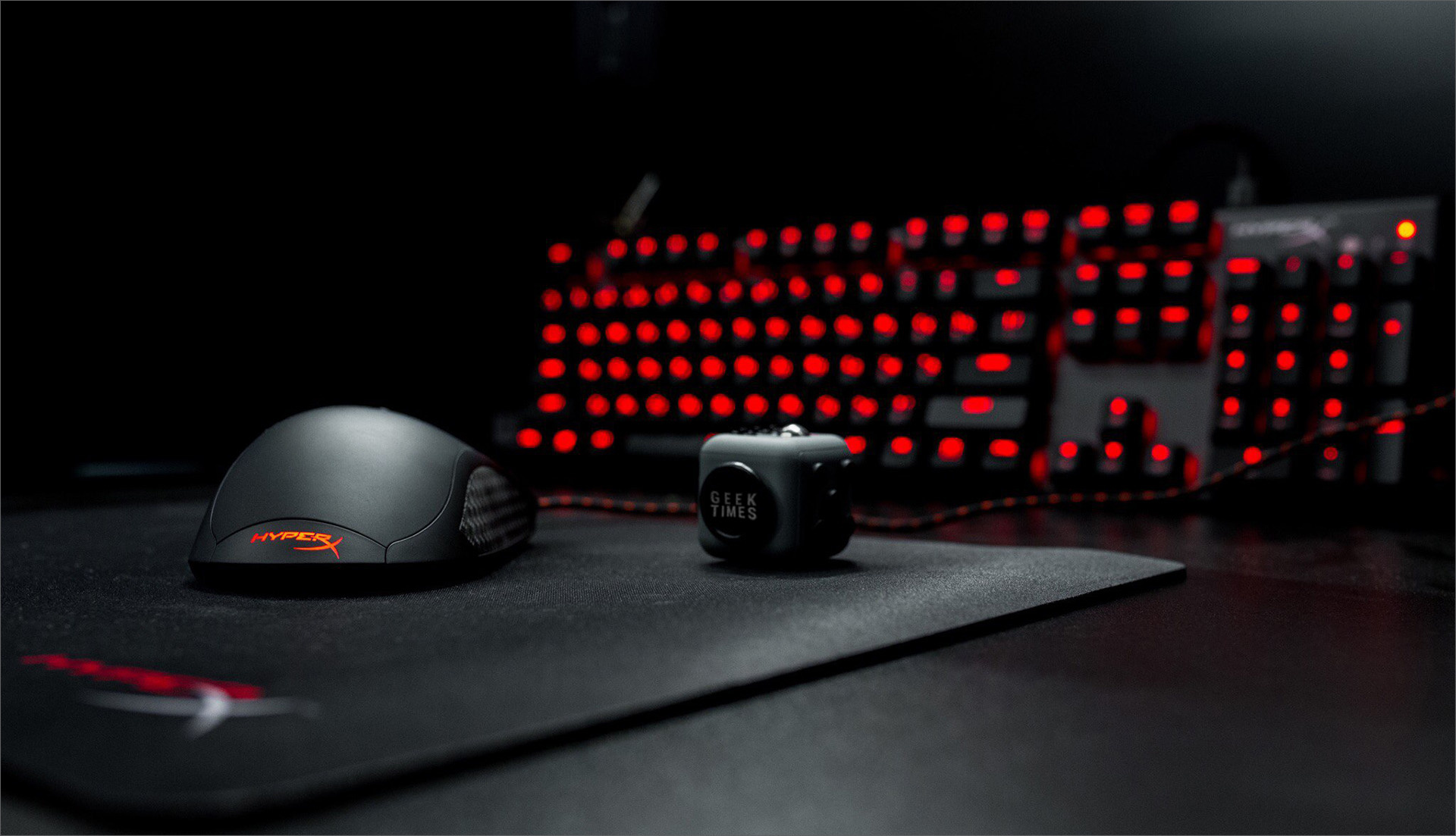
The mouse will be available for sale in Russia in early July at a price of 3990 rubles. In the meantime, there is a pre-order : you can be guaranteed to be one of the first owners of the new product. Now, fans of mono-brand configurations and peripherals can assemble a complete set of the mouse, keyboard and headset, made in the same style.
Drop by us more often, there is always something to read.

Dozens of vendors, popular and not so, produce faceless clones, flaunting decorations and zeros on the price tag. Find in this jumble of bright LEDs and extreme DPI something truly suitable is becoming more and more difficult, and so rare are those rare instances with a refined value for money and minimalistic design. HyperX Pulsefire FPS is just that, and now you can see for yourself.
House for mouse
The theater starts with a hanger, the work starts from the login screen, and any new gadget starts from the box. HyperX rodent is packed in a vertically-opening cardboard case.

Almost apple minimalism reigns inside: a mouse on a plastic bed, and a fabric tail under it. No multi-layer translucent blisters, screeds and try-tear-me-a-non-half-packing of protective adhesive tape.

Not that the box was an important functional part, but attention to the details is already visible here: it's nice when you are taken care of and unpacked with another small pleasure.
Concept and design
At first glance, Pulsefire FPS is a typical mouse for players in shooters: there are dozens of them. Asymmetrical design for the right hand, ergonomic grip and average in all respects dimensions - you can drag the mouse with your fingers and the whole palm. Two buttons on the left side, an ordinary wheel, an additional mini-button below it to adjust the sensitivity on the fly - that's all. Competition in this segment has long been brought to the limit and has moved from a quality struggle to an ideological one: commitment to one or another brand sometimes outweighs common sense or technical characteristics.

However, even five minutes of operation forced to pay attention to the rodent. Despite the “pot-bellied” profile, the mouse is not very tall and weighs quite a bit. Simple-looking dark gray plastic is very hard to stain, and completely indecent-oily prints are easily erased with a standard napkin. Rubberized side panels do not “float” on the layer of transparent glue, but stay in place, as if they were fused into the structure. Everything together creates a feeling of a monolithic carbon-fiber device: not the slightest squeaks, everything keeps in its place ideally, and moving elements move as if on rails.

Feelings of a “click” create two elements: Omron microswitches (which are probably in all decent mice), registering the press itself and determining the force required to directly perform a click, and the characteristics of the key's plastic: its flexibility, free movement before touching “ Clicker "and body thickness.

Both the left and right buttons work with the precision of surgical instruments. The effort is calibrated so well that you can keep the key on the verge of triggering and clearly feel the border after which a click will occur (and a shot, respectively).
Large side keys (performing basic navigation back and forth in Windows and office programs) have an excellent “threshold” when pressed. Even if your thumb is always on one of them - there will be no accidental pressing in 99.9% of cases, the line between “worked” and “just about” feels perfect.
The wheel is devoid of any fashionable features such as kinetic scrolling and switching modes: the usual “steps” when scrolling, well convey tactile information to the user, and do not lead to cursor jitter.

One of the main features of the Pulsefire FPS is the huge “paws”: these are not just four slips that tend to catch some dirt or dust on their edges, scratch, loosen the glue joint and get lost in a backpack. Two huge monolithic stickers with a wide patch of contact and smooth rounding around the edges: no hooks on the playing surface, no loss of efficiency. Only a completely ceramic base would be cooler, but the prices for such luxury are far from humane.
Overall, the typical HyperX. The cable in the original red-black textile braid is quite soft, but durable, good materials and a balanced approach to the filling.
Filling
The most delicious in the mouse, of course, inside. We heat up the lower part with a hairdryer, gently hook the sliding surface and slowly prepare the tailed beast. If inside who expects to see a miniature nuclear reactor, drawings of the "death star" or a diamond coating of moving parts - I hasten to disappoint you, there is nothing supernatural about Pulsefire FPS.

A wheel with a mechanical (resistive) encoder is considered less durable than the options with an optical sensor, but it has its advantages. This scheme works faster and does not suffer from the effects of "reverse scroll" if it stopped in an intermediate position and the system could not correctly determine the direction of scrolling during the first "step". And the resource of such a solution is still sufficient - you will have to rotate the wheel continuously (24/7) for many months in a row in order for the system to fail.

The registration of the main clicks is performed by Omron's proven Japanese “mikrikas” with medium elasticity: you will find these in most gaming mice, and the main thing here is the correct installation and contact with the response part of the keys. The transfer of tactile sensations to the user and the ability to keep the mouse on the verge of clicking directly depend on this. For the side buttons and the sensitivity switch parts are used simpler, manufactured by Kailh.

The sensor is a classic game of the game of the past years: Pixart PMW3310. The sensitivity range is from 400 to 3200 with two intermediate steps of 800 and 1600 DPI, low data processing delays and high surface scanning frequency made it popular among manufacturers, and the accuracy of work and the absence of distortion on both axes (X, Y) ensured a trip to the hall Fame Flawless sensors (featuring flawless accuracy) and recognition among professional players and amateurs around the world.
In work
Despite the rather old sensor and a low maximum DPI, the mouse behaves perfectly both in the system and in games. A major role is played not only by the hardware itself, but also by the firmware of the microcontroller, which processes the flow of information from the mouse sensor. The transformation of raw data into understandable system - just the very half of the "magic", which distinguishes a good mouse from the excellent. In the case of HyperX Pulsefire FPS, the formula for success is simple: Well-studied hardware + experienced programmers = excellent tracking of the cursor.

You can play on a bare wooden table for something relaxing, like GTA V, without any problems. The sight will not shake, stick and perform sudden jerks - too. The work of the mouse on a high-quality gaming carpet is truly revealed. Both HyperX branded gaming surfaces and other vendors' versions work perfectly: on thin plastic, textured aluminum and puffy fabric mats with a soft backing, Pulsefire FPS feels equally confident.
Licked software works wonders. If you have ever switched from a regular office monitor to a 120+ hertz game, and even with some G-sync, you will understand what it is about. Instant reactions to each movement and at the same time extremely predictable trajectory of the cursor.

As if you are moving your finger across the touch screen or using a graphics tablet: the cursor follows your thought without the slightest hesitation, and there is no characteristic “cramp” inherent in laser mice. Optics somewhat smoothes the heterogeneity of movement and surface defects, while the engineers managed to get rid of the “water” in the sensations: there is no effect of “jelly” or “cursor on the elastic band”. As a result, each stroke of the cursor turns into an elegant and precise gesture. There was an opponent - became a frag.
In the Overwatch with a 160 Hz display, it is easy enough to lead the target with a sniper: only iron will not make you a champion, but will allow you to start playing without thinking about the periphery, on some "spinal" reflexes. To control the spray "Kalash" in the same CS: GO much easier than with a laser sensor.
Results
The Pulsefire FPS does not have record-breaking characteristics or memorable features — the mouse and the mouse, albeit a very valuable breed. There are few devices on the market that, for all their simplicity, turn out to be of high quality, practical and convenient. The lack of what abroad is called “bells and whistles” somewhat diminishes the mouse values in the eyes of the players, khm-khm, the younger age group, but brought it the prestigious RedDot design Awards for its ergonomics and appearance.

No extraneous software, macros, 16 million backlight colors and other entrances, the emphasis on important features and high-quality materials showed itself perfectly in HyperX gaming headsets, worked in keyboards, it is logical to assume that it will “shoot” here. Time will tell. ;)
One-click sensitivity setting? There is. One of the best sensors with excellent controller firmware? By itself. Clicks and the wheel fully meet the needs of both avid cybersportsmen and simply lovers of high-quality peripherals? Yes, yes, and yes again. So what else is needed? That's right, find out the price and the date of commencement of sales.

The mouse will be available for sale in Russia in early July at a price of 3990 rubles. In the meantime, there is a pre-order : you can be guaranteed to be one of the first owners of the new product. Now, fans of mono-brand configurations and peripherals can assemble a complete set of the mouse, keyboard and headset, made in the same style.
Drop by us more often, there is always something to read.
All Articles